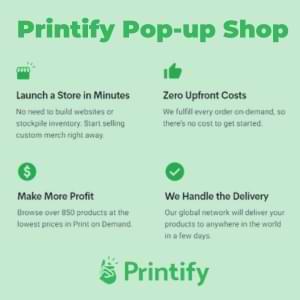Marketing Plan for Small Business
Are you a small business owner looking to take your marketing efforts to the next level? Creating and executing an effective marketing plan can be intimidating, but it doesn’t have to be. With some guidance, anyone can develop a successful strategy that drives results while serving their target audience.
At its core, developing a great marketing plan is about understanding your customer’s needs and desires so that you can serve them better than ever before. By putting together a comprehensive actionable plan with measurable steps, you’ll be able to transform your business into one that’s focused on helping others reach their goals.
In this article, I’ll walk through each step of creating an impactful marketing plan for your small business. From defining goals and objectives all the way through measuring success — we’ll cover everything you need to know. So let’s get started!
Small Business
A small business is typically defined as one with fewer than 500 employees. It can be a sole proprietorship, limited liability company (LLC), or corporation. Many entrepreneurs are drawn to the idea of running their own businesses, but they often lack the resources and knowledge needed to create a successful venture. Developing a marketing plan for your small business is essential if you want it to succeed in today’s competitive marketplace. A good marketing plan will help you understand your target market, identify potential customers, and determine which strategies best suit your budget and goals.
When crafting your marketing plan for small business, start by assessing what sets you apart from other competitors in the industry. Consider how you can differentiate yourself from them through unique selling points and value propositions that draw customers’ attention. Next, consider the channels available to reach those potential customers: digital platforms like social media and search engine optimization (SEO) could prove invaluable for increasing brand visibility online. Alternatively, traditional mediums such as print advertisements or television commercials may still be effective depending on who comprises your audience base.
Finally, make sure you have measurable objectives in place throughout each phase of your strategy so that you can track progress over time and spot areas of improvement or growth opportunities quickly. With careful planning and diligent execution, a well-crafted basic marketing plan for small business can offer immense rewards — both financially and emotionally — when done right!
Elements Of A Successful Marketing Plan
Creating a successful marketing plan for your small business is an essential part of succeeding in the competitive world of entrepreneurship. From understanding target markets to detailing strategies and tactics, having a well thought-out plan can help you reach success faster than going it alone. Let’s take a look at the key elements that make up any effective marketing plan.
The first step in creating your marketing plan is identifying who your target audience is. You should start by researching potential customers, their needs and preferences as well as what competitor products they’re currently using. Having this information will allow you to create content and campaigns tailored specifically to them. Once you have identified your ideal customer profile, you are ready to move on to more detailed steps such as developing a product or service offering, pricing strategy and promotional activities.
Next comes the process of setting goals and objectives related to these areas. Without measurable targets, it will be difficult to determine whether or not your efforts are successful over time. It’s important that each goal is specific enough so that progress towards achieving it can be tracked easily. This could include things like increasing sales revenue by 20% within two months or doubling website traffic over six months.
Having clear objectives allows you to then develop strategies for reaching those goals effectively with limited resources available. These strategies should encompass both digital and traditional methods including advertising, promotions, events and even word-of-mouth referrals from existing customers. Finally, once all of these pieces come together, you’ll need tactics – actionable items that bring those plans into reality through various channels such as social media posts or email campaigns. With careful planning and execution, these tactics can help propel your small business forward toward its desired results quickly!
Best Marketing Books on Amazon
Small Business Marketing Plan Example
A small business marketing plan is a document that outlines the strategies and tactics that a business will use to reach its sales and marketing goals. The plan should include a clear description of the target market, the tactics that will be used to reach them, how the business will measure success, and a budget.
Target Market: Our target market consists of small business owners in the greater Los Angeles area.
Tactics: We will use a combination of traditional and digital marketing tactics to reach our target market. These tactics include:
- Paid advertising on local radio and TV stations
- Social media campaigns on Facebook, Instagram, and Twitter
- Content marketing such as blog posts, newsletters, and videos
- Email campaigns
- Events and networking opportunities
Measuring Success: We will measure success by tracking the number of leads generated from our campaigns, the number of sales, and customer satisfaction.
Budget: Our budget for marketing efforts will be $10,000 per month. This budget will be allocated to each of the tactics listed above.
Our small business marketing plan is designed to reach our target market, increase sales, and ensure customer satisfaction. With a clear plan and budget in place, we will be able to achieve our marketing goals.
Example of a Marketing Plan Strategy for Your Small Business
Marketing Plan for XYZ Small Business
Objective: To increase overall sales by 10% within the next 6 months through the implementation of a comprehensive marketing plan.
Target Market: XYZ Small Business is targeting the 18-35 age group with a focus on college students and young professionals.
Marketing Strategies:
- Social Media: XYZ Small Business will use social media channels such as Facebook, Twitter, Instagram, and YouTube to reach out to its target audience. This will include engaging content such as promotions, giveaways, polls, and contests.
- Advertising: XYZ Small Business will use online, print, and radio advertising to reach its target audience. This will include targeted ads on social media, targeted ads on search engines, and targeted ads on radio stations.
- Public Relations: XYZ Small Business will reach out to local media outlets and bloggers to increase its visibility in the market. This will include press releases, interviews, and other promotional activities.
- Events: XYZ Small Business will host events such as open houses, product launches, and workshops to engage with its target audience.
- Partnerships: XYZ Small Business will partner with local businesses and organizations to increase its visibility in the market. This will include cross-promotions, co-branding, and other joint ventures.
Budget: XYZ Small Business will allocate $10,000 for its marketing efforts over the next 6 months. This will include spending for advertising, public relations, events, and partnerships.
Timeline: XYZ Small Business will launch its marketing plan within the next 3 months and will review its progress after 6 months.
How to Create a Small Business Marketing Plan for Your Business
- Set Goals
- Research Your Market and Customers
- Develop Your Unique Selling Proposition (USP)
- Identify Your Target Audience
- Analyze Competitors
- Develop Strategies
- Create Brand Identity
- Establish Budgets And Timelines
- Monitor Results & Make Adjustments
- Evaluate Effectiveness
Setting Marketing Goals
In the previous section, we examined the essential elements of a small business marketing plan. Now let’s take time to consider setting goals for your small business social media marketing plan. With this in mind, one must first look at what is attainable and realistic before any planning begins.
Time-bound objectives are necessary when it comes to achieving success with any form of marketing effort; however, they can be particularly helpful with a social media campaign due to the competitive landscape these platforms create. An effective goal should be clear, concise and achievable within an allotted timeframe. A good example would be something like “gaining 5% more followers on Twitter over the next 6 months” or “increasing engagement by 10% across all social channels during Q3 2019”. These targets provide focus and direction which will help you measure progress as well as assess how successful your efforts have been throughout each stage of your journey.
It’s also important to keep track of ROI (return on investment) along the way too – whether that be financial or other forms such as new connections made or brand recognition gained. As Benjamin Franklin once said: “If you fail to plan then you’re planning to fail”, so make sure yours stand up! If executed correctly, having concrete goals in place will ensure consistent growth in terms of reach, response and feasibility over time while helping build momentum towards overall success.
Market Research
The journey to success begins with the understanding of one’s market. Knowing who you serve and what they need is key in crafting a successful marketing plan. To get those insights, Market Research is critical.
One small business had an innovative idea that would revolutionize the industry – if only they knew how their customers felt about it! After months of research, surveys, interviews and focus groups, they finally understood whether or not their vision was worth pursuing – and it paid off big time.
As an expert in small business marketing, I understand that taking the time to do thorough market research can be challenging for entrepreneurs who are eager to move quickly into action mode. However, without this knowledge there’s no way to craft effective messaging that resonates with your target audience on a deeper level. It also helps ensure that decisions being made align with customer needs and wants so you can make sure you’re working smarter rather than harder when trying to reach objectives.
Market Research should always be at the forefront of any solid marketing strategy as it provides valuable information about current trends and areas where opportunities lie within the marketplace – all which help inform smart decision-making and ultimately lead to greater success for your brand down the line.
Your Unique Selling Proposition (USP)
A small business marketing plan should develop a unique selling proposition (USP) to stand out from the competition. A USP is a statement that describes how a company’s product or service is better than the competition. It should be concise, memorable, and provide clear value to potential customers. This can be accomplished by highlighting the company’s product or service features, advantages, and benefits. For example, a company selling organic produce may emphasize its freshness, flavor, and health benefits.
Developing a USP helps a small business stand out from the competition and target its ideal customers. It also helps a business define its brand identity and values, which can help build trust and loyalty. Finally, a USP can help a business create effective marketing campaigns and messages that will resonate with potential customers.
Identifying Target Audience
Identifying the target audience of a small business marketing plan is essential in order to reach success. The target market should be defined by age, gender, culture, education level, values and interests. To do this effectively requires research on existing customers as well as potential ones.
The following strategies can help identify an appropriate target audience:
- Analyzing current customers
- Surveying current customers about their needs and preferences
- Examining customer profiles for demographic information such as location, income level and buying habits
- Conducting market research
- Exploring industry trends and analyzing competitors’ offerings
- Researching local areas or demographics that may have similar characteristics to existing customers
By using these tactics it’s possible to gain insight into the identity of a company’s ideal customer. This knowledge will enable businesses to create effective campaigns tailored specifically to their desired audiences, increasing the likelihood of achieving desired outcomes from their marketing efforts.
Analyzing Competitors
It’s essential to understand your competitors in the marketplace. Knowing what they are doing, how they position their products or services and who they serve is critical for success. It’s important that you know if there is a gap between what they offer and what you can provide.
To gain an edge over the competition, conduct thorough research on them. Analyze their strengths and weaknesses; find out what strategies have worked well for them and why. Consider their pricing structure, website design, customer service policies, marketing tactics, etc., as this will help to determine where you should focus your efforts. Also, look into any partnerships or affiliations that could provide an advantage to your business.
By taking these steps to analyze your competitors effectively, it helps ensure that your business stands out from the rest by emphasizing its unique value proposition. This not only gives customers clarity about what sets you apart but also increases brand loyalty among existing customers – both of which drive long-term growth potential.
Developing Marketing Strategies and Marketing Tactics
Now that we have identified our competitors and analyzed their strengths and weaknesses, it is time to develop our own unique strategies. Our goal should be to stand out from the competition while still delivering quality products or services.
To create an emotional response in our target audience, we must offer them benefits they will find exciting and joyful. We can do this by ensuring that all materials used are of a high quality, as well as employing innovative processes which will keep them engaged. Additionally, offering a satisfaction guarantee or money back policy will give customers peace of mind when purchasing from us. By creating creative designs for our products or services that set us apart from rivals, potential customers will see us as being more reliable than others in the market. Finally, building strong relationships over time through excellent customer service further solidifies trust between ourselves and our clients — thus leading to increased loyalty towards our brand.
Better yet, understanding how these strategies fit into the grand scheme of your overall business goals allows you to realize greater success down the line! Through effective implementation of marketing tactics tailored specifically for your small business’ needs, you can maximize profits and ensure long-term sustainability.
Creating Brand Identity
Creating an effective brand identity is essential for a small business to be successful. It’s important to create an emotional connection between the company and its customers, as this will help foster loyalty. Here are some tips on how you can do just that:
- Establish Your Brand Values
- What does your business stand for?
- How do you want it to be perceived by customers?
- Create a Unique Visual Identity
- Developing memorable logos and visuals associated with your product or service is key in creating recognition.
- Tell Your Story
- Give people something to connect with – tell them why your company was founded, what makes it unique, how it serves others. Letting potential customers know about your story helps build trustworthiness and familiarity.
By following these steps, you can create a powerful brand identity which resonates with existing and prospective customers. This will allow you to better position yourself in the market, differentiate from competitors and ultimately increase sales.
 Designing Promotional Materials
Designing Promotional Materials
Moving on from creating a brand identity, the next step in marketing your business is to design promotional materials. These will be used to attract potential customers and reinforce your unique value proposition. Your promotional materials should accurately reflect your brand identity and make sure that it stands out among competitors’.
To get started with designing promotional materials, consider who you are targeting and what message you want to convey. This could include leaflets, posters, flyers or any other type of advertisement material. Keep in mind that colors have an impact on how people perceive information – use bright colors for attention-grabbing visuals, while cool tones can evoke feelings of trustworthiness.
Make sure each piece of content conveys the same overarching message about your company’s values and offerings. Take into account where these pieces of content will be seen so they can effectively reach those who may not know about your services yet. Lastly, don’t forget to add contact details such as website URL or social media handles to ensure customers can easily find more information about you online.
With well-crafted and tailored promotional materials featuring a consistent message across all platforms, you will be able to build awareness around your brand and engage with potential customers like never before!
Optimizing Digital Presence
The digital presence of your business is critical for success in today’s market. Having a strong online profile and effectively engaging with customers through social media can be the difference between success and failure. Here are some tips to help you optimize your small business’s digital presence:
First, make sure all contact information on your website or app is up-to-date. This includes phone numbers, emails addresses, physical address, etc. Also provide easy access to customer service so that people can get answers quickly. Make sure all payment methods are accepted and secure as well so customers feel comfortable making purchases from the site or app.
Second, create content across multiple channels like blogs, podcasts, videos and other mediums that show off the unique value proposition of your company. Use this content to engage with potential customers by providing valuable insights into their needs and interests. For example, if you sell fitness equipment then creating a blog post about how to use it correctly would be useful for those looking to purchase it.
Finally, focus on building relationships with customers through social media platforms such as Facebook and Twitter. Respond quickly when they have questions or comments; listen to their feedback so you can improve services; share relevant content regularly; offer discounts or deals exclusively available via social media; encourage reviews –all these things will help build trust with current and potential customers while helping increase brand awareness too!
Leveraging Social Media
Today, having a strong social media presence is essential for small businesses to stand out and gain traction. It’s an invaluable resource for driving organic growth and long-term success. With the right strategy in place, you can maximize your reach with minimal effort. To get started on leveraging this powerful tool, here are three crucial steps:
Firstly, identify your target audience and determine where they are spending their time online. This will help you focus your efforts so that you don’t waste energy trying to make connections with people who won’t be interested in what you have to offer. Once you know which platforms your customers use most often, it’s time to create content tailored specifically for them – engaging posts that address relevant topics or provide helpful advice related to your business niche. Finally, start building relationships by responding quickly and thoughtfully to comments or messages from those who engage with your brand.
Social media is a great way to build trust with potential customers while showcasing the unique benefits of working with your business. By treating each interaction as an opportunity to establish credibility and demonstrate value, you’ll be able to maintain meaningful relationships with members of your target market over time. This will also give them peace of mind knowing that if they choose to work with you, their needs will always be taken care of promptly and efficiently. In turn, this should lead more people into becoming loyal customers!
Using Traditional Advertising Methods
Traditional advertising methods are still an effective way to reach customers and promote a business. This includes print media, television, radio, and outdoor ads such as billboards. Each of these channels has its own advantages in reaching existing and potential customers.
| Traditional Advertising Methods | Advantages | Disadvantages |
|---|---|---|
| Print Media | Wide Reach | Expensive |
| Television | High Visibility | Costly |
| Radio | Low Cost | Short Life Span |
| Outdoor Ads (Billboards) | Local Targeting | Easily Forgotten |
By utilizing traditional marketing strategies tailored to your target customer base, you can maximize the visibility of your brand while achieving the desired results. Print media is excellent for widespread distribution and dissemination of information; however it may be expensive depending on circulation size. Television advertisements provide high visibility but have relatively high production costs compared with other forms of media. Radio advertisements have a low cost associated with them yet they often do not last long enough to make an impression on consumers as they move onto something else fairly quickly. Outdoor ads like billboards are great for local targeting if placed properly in certain areas where people frequent; although most people tend to forget about billboard advertisements after passing by them multiple times.
Overall, traditional advertising methods serve their purpose in engaging current customers and attracting new ones when used correctly within the context of a well-crafted small business marketing plan. With strategic implementation and tracking, businesses can measure success rates from all types of campaigns that lead back to sales growth or other desired outcomes.
 Establishing Budgets And Timelines
Establishing Budgets And Timelines
Creating a budget for your small business marketing plan is essential. It will help you to determine how much money and time are available for the project, as well as set realistic expectations from the start. A budget also forces us to be creative when it comes to utilizing resources efficiently.
To create an effective budget, we must first estimate our needs in terms of both financial and human capital. This includes staff salaries, materials or equipment purchases, advertising costs, website hosting fees and more. Once we have these estimated numbers, then we can begin putting together our timeline of implementation and milestones along the way.
Here’s what we should consider when planning out budgets and timelines:
- Define key objectives clearly so that all stakeholders understand them
- Consider environmental factors such as seasonality or holidays
- Estimate resource availability accurately
- Allow room for contingencies if something goes wrong
It’s important to remember that creating a successful marketing plan requires careful consideration of both financial limitations and scheduling constraints. An effective strategy balances the two components in order to ensure success without over-extending either one beyond its limits. With this approach, businesses can maximize their impact with limited resources while still achieving their desired results.
Monitoring Results & Making Adjustments
Monitoring results and making adjustments to a small business marketing plan is essential in order to ensure that the desired outcomes are achieved. It’s important to track progress on a regular basis so that any necessary changes can be made quickly. This type of feedback helps businesses identify areas where they need to focus more attention or make improvements.
The process for monitoring results should include reviewing key performance indicators (KPIs) such as website traffic, customer reviews, social media engagement, search engine rankings and goal achievement status. The data gathered from these KPIs will give an indication of whether the current marketing strategy is working or if there needs to be a shift in direction.
It’s also important for business owners to keep up with industry trends and adjust their strategies accordingly. By staying informed about what competitors are doing, companies can stay ahead of the curve and create innovative approaches that will help them stand out from the crowd. Additionally, it’s important to review customer feedback regularly in order to understand how customers perceive your brand and product offerings. With this information, you can make appropriate changes to improve overall customer satisfaction levels and boost sales figures over time.
By implementing an effective system for tracking results and adjusting your small business marketing plan accordingly, you can position yourself for success well into the future!
Evaluating Effectiveness to Scale Your Small-business Marketing
Once the results of your small business marketing plan have been monitored and adjustments made, it’s time to evaluate the effectiveness of your efforts. This is an important step since without proper evaluation, you won’t be able to determine if all that effort was worth it or not.
The most effective way to evaluate a marketing plan is by looking at the bottom line. Consider how much money was spent on advertising and promotion versus how much revenue was generated from those efforts. Was there an increase in sales? Did more people visit your website or physical store after implementing the promotional campaign? These are questions that can help you assess the success of your strategy.
You should also take into account customer feedback when evaluating the effectiveness of your small business marketing plan. Are customers satisfied with their experience? Is there anything about the product or service that could be improved upon? By taking these factors into consideration, you’ll be able to make any necessary changes to ensure future campaigns are even more successful.
Frequently Asked Questions About Marketing Strategies for Small Businesses
What Are The Best Ways To Optimize My Digital Presence?
Digital presence is a critical factor in business success, and optimizing it can lead to more customers, higher profits, and an improved overall brand image. Many small businesses struggle with this task but the truth is that there are several simple strategies that you can use to make sure your digital presence gives you maximum benefit. As an expert in small business marketing, here are some of my top tips for improving your digital presence:
- Optimize Your Website: It’s essential to have a website that looks great and provides visitors with the information they need quickly and easily. Make sure all images are high-resolution, text is well organized, links work correctly, page loading time is fast, and the design meets industry standards.
- Leverage Social Media Platforms: Having active profiles on social media sites like Facebook and Instagram allows you to reach potential customers where they already spend their time online. Focus on creating engaging content that resonates with your target audience while also highlighting what makes your business unique. Additionally, don’t forget about other platforms such as YouTube or LinkedIn if they fit into your marketing strategy.
- Invest in Paid Ads: Paid search engine advertising (e.g., Google AdWords) and targeted display ads (e.g., banner ads) can be powerful tools when used properly. By investing wisely in these types of ad campaigns you can quickly increase visibility for your products or services among qualified leads who may not have been aware of them otherwise.
Optimizing one’s digital presence takes thoughtful planning but by following these steps any small business owner can greatly improve their chances at success online. The key takeaway here is to invest time – both upfront for research & development purposes as well as ongoing maintenance – so that you don’t fall behind the competition when it comes to taking advantage of emerging technologies related to digital marketing. With a little effort and knowledge anyone can create a strong foundation from which to build upon!
How Do I Know If My Traditional Advertising Methods Are Working?
When it comes to deciding whether or not your traditional advertising methods are working, there’s no one-size-fits all answer. Different businesses will have different approaches that work for them and the key is finding out what works best for you. It can be difficult to measure the efficacy of traditional ads, but with a few simple steps you can make sure that your efforts are paying off.
The first step in determining if your traditional marketing tactics are successful is to identify what type of results they’re getting you. Are people responding positively? Is there an increase in sales after running an ad? Are customers more aware of your brand due to the campaign? Asking yourself these questions will help you better understand how effective your approach has been.
Once you’ve identified any patterns between the success of your campaigns, you’ll need to consider other factors like cost effectiveness and customer feedback. Think about how much money each advertisement costs versus how many potential customers it brings in – this will give you a good indication as to whether or not it’s worth continuing with those methods. Additionally, ask customers directly what influenced their decision to purchase from you – was it something they saw on television or heard on radio? Customer feedback is invaluable when trying to gauge the impact of traditional advertising methods.
In order for small business owners to get the most out of their investments, understanding which types of advertisements bring in new leads and generate conversions is essential. Taking time to evaluate both positive and negative responses from customers can provide valuable insight into optimizing future campaigns and ensuring that every dollar spent yields maximum return.
How Do I Make Sure I Stay Within Budget While Creating My Marketing Plan?
Creating a marketing plan for a small business is no easy feat. It requires careful planning and budgeting, as well as the skill to assess what’s working and what isn’t. As an expert in small business marketing, I often hear this question: how can you make sure your plan stays within your budget? The answer lies in understanding where to focus your resources so that you get maximum results from minimum investments.
The key to success here is knowing which traditional advertising methods are worth pursuing and which should be avoided. This means keeping up with current trends and staying informed about best practices of successful businesses in similar industries or markets. You need to know when it’s time to invest more money into certain tactics, like targeted digital advertising campaigns or social media promotion, while also being aware of when too much spending could cause unnecessary strain on your budget.
When creating any kind of marketing plan – especially one for a small business – it’s important to always think strategically about how each dollar is spent. Prioritize activities that have been proven effective yet cost-efficient, such as organic SEO efforts or email newsletters. And don’t forget to monitor progress along the way – if something’s not working, adjust quickly before wasting additional funds trying to fix it! With these tips in mind, you’ll be able to create an effective marketing plan without breaking the bank.
What Are The Key Elements Of A Successful Brand Identity?
Creating a successful brand identity is one of the most crucial elements for any business, regardless of size. It’s what sets you apart from your competitors and helps potential customers recognize who you are and what you offer. Crafting an effective brand identity involves more than just having a logo; it requires considering all aspects of your marketing strategy to ensure that they come together in a cohesive way.
When creating your brand identity, there are several key components to consider:
- Visuals: This includes everything from logos to fonts, colors, imagery, and other design elements. They should be consistent across all platforms used by the company so that customers can easily identify the company at a glance.
- Messaging: Developing clear messaging about what makes your product or service unique will help build trust with potential customers. Be sure to highlight not only what you do but also why you do it.
- Tone & Voice: Your tone and voice should be consistent throughout all communications with clients and prospects. Identifying how you want people to perceive your brand through words is essential for building relationships with them over time.
By taking into account these three key elements when crafting a brand identity, businesses can create an effective presence in their marketplace without breaking the bank. Designers can work within budgets while still ensuring that their designs stand out against those of competitors and effectively communicate their message – allowing them to remain competitive and build customer loyalty over time.
Additionally, small businesses have access to numerous tools which allow them to design professional visuals on their own if they don’t have much money available for hiring outside services such as graphic designers or copywriters.
How Can I Measure The Effectiveness Of My Marketing Plan?
Measuring the effectiveness of a marketing plan can be daunting. It’s like standing in front of a wall with many doors, and being unsure which one to choose. The path ahead may seem foggy and unclear, but there are certain elements that you can focus on to ensure success. As an expert in small business marketing, I have identified some key points that will help guide you along this journey towards measuring your marketing plan’s performance.
First off, it is important to set measurable objectives for yourself at the outset. Ask questions such as: How much revenue do I want to generate within the next three months? What customer segment would I like to target? These goals should be realistic yet ambitious – lofty enough to keep you motivated while still achievable enough so that they don’t become overwhelming or cause burnout. By setting concrete goals from the start, you will be able to track your progress more easily and adjust accordingly if needed.
The second step is gathering data about your customers and their behavior. Analyzing user engagement metrics allows us to gain valuable insights into our target audience’s preferences and needs – information that we can use in order to tailor our campaigns and optimize their efficiency. With this knowledge at hand, we can then design experiments around different strategies and techniques; testing each of them against our benchmarks until we find what works best for our brand identity.
Ultimately, tracking these results over time will give us a clearer picture of how well our efforts are performing – enabling us to make informed decisions based on hard evidence rather than guesswork alone. Armed with accurate feedback loops in place, we can confidently move forward knowing that all steps taken are leading towards achieving maximum impact for our desired outcome.
Final Thoughts on Creating a Small Business Marketing Plan
Developing a successful small business marketing plan requires careful consideration of the unique needs and goals of your company. A savvy entrepreneur understands that it’s not enough to just “wing it.” You need to create a comprehensive strategy that will help you maximize visibility, target potential customers, and increase sales.
With this in mind, think about your marketing plan as a puzzle – each piece is essential for creating an overall picture that resonates with your audience. Start by building out a solid digital presence using SEO best practices, then consider how traditional advertising can support those efforts. Along the way, ensure that every element of your brand identity remains consistent across all touchpoints; from website design to print collateral. Finally, don’t forget to measure results so you can make informed decisions on where to put more resources or cut back if necessary.
Creating an effective small business marketing plan takes time and effort but can be extremely rewarding when done correctly. Like painting a masterpiece, investing in the right tools and materials up front is key – use them wisely and let your creative vision lead the way!
Bottom Line: a great small business marketing plan is about understanding your customer's needs and desires so that you can serve them better than ever before. Share on X
Note: Some links on this page are affiliate links meaning that if you click on my link and make a purchase, I will receive a small commission. It does not however affect the price you pay. Plus, it’s a great way to support me and the content I’m providing.






